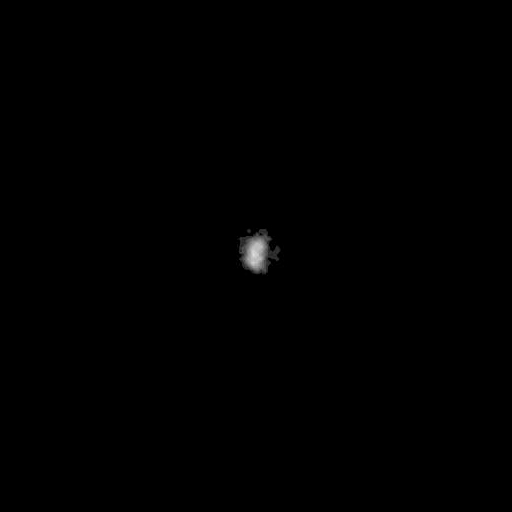Nereid, a moon of Neptune
3,425,861 miles
211 miles
Nereid is one of Neptune's fourteen moons. It was discovered in 1949 by the Dutch astronomer Gerard Kuiper. It has a diameter of about 340 kilometres (211 miles) and is the third largest of Neptune's moons. Nereid has the most eccentric orbit of any moon in the solar system. This orbit can bring it as close as 1,353,600 kilometres (841,100 miles) to Neptune and as far away as 9,623,700 kilometres (5,980,200 miles) from it. It's average orbital distance is 5.5 million kilometres (3.4 million miles) and takes about Nereid 360 days to complete a full journey around Neptune.
Nereid is classed as an irregular prograde moon. An irregular moon usually refers to a moon that has been captured by a planet's gravity rather than one which formed around it. A prograde moon is one that orbits in the same direction of its host planet's rotation. It's likely that Nereid was originally an asteroid or an object that formed in the Kuiper Belt.
In Greek mythology, the Nereids are sea nymphs. They are the 50 daughters of Nereus, the old man of the sea, and Doris, one of 3,000 Oceanids. The Nereids represent all that is good about the sea and are kind and helpful, protecting sailors through stormy voyages. They live at the bottom of the Aegean Sea with their father.
The name Nereid was suggested by Gerard Kuiper when he reported his discovery. It kept to the watery theme that had already been established for the naming of Neptune and its moons. Neptune is named after the Roman god of the sea - the equivalent god in Greek mythology is Poseidon. Triton, the first moon discovered, is the son of Poseidon and also a god of the sea. The names of all of Neptune's moons are water-related.
An alternative name for Nereid is Neptune II, which simply refers to it being the second moon discovered of Neptune.






